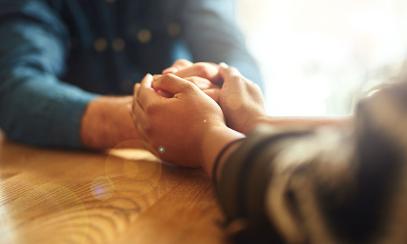Dear Fr. Joe: What’s proper etiquette at Mass?
Greetings! In this special edition of my column, I’m going to try to cover a few “Liturgy etiquette” questions.
Q: When I drank from the cup at Communion last week, I saw a soggy piece of something in the bottom of the chalice? What was that?
A: That was a particle of a consecrated host. During the Mass, the priest broke off a small piece of the host and placed it in the chalice. Now, why would he do that?
As I researched, I discovered an amazing history to this practice. I hope you enjoy reading it as much as I did.
As it happens, in early Christianity, there was only one Mass in each city or area. All Christians came together and celebrated with their bishop in one place. As Christianity grew and spread out geographically, the bishop needed to meet people’s needs, so he sent priests to go to other areas. When that priest went to the place where he was to celebrate Mass, he brought a small piece of a host that had been consecrated at the bishop’s Mass. This particle, the fermentum, was dropped into the chalice at the “commingling rite” just before the distribution of Communion.
The priest did this to help people see their connection to the apostles and the unity of all people celebrating Mass. What a powerful image!
Of course, this is not necessary anymore. You and I are used to the practice of a priest, not the bishop, celebrating Mass. But the rite of commingling has stayed in the Mass. Watch the priest while we’re singing Lamb of God. When he breaks off that small piece of the host, he says “May this mingling of the body and blood of our Lord Jesus Christ bring eternal life to us who receive it.”
Q: I really dislike holding hands with strangers during the Our Father, but that’s what the priest suggests in our parish. Do I have to do this?
A: I understand … let’s see if I can’t help. I looked around a bit on this and, interestingly enough, the only quote I could find from our bishops is that “there is no prescribed position for the hands during the Our Father.”
What does that mean? Quite literally, you can allow personal preference guide you, within reason. With that in mind, what are your choices? As far as I can tell, you are afforded three options:
1. You can join hands with those around you.
2. You can hold your hands in the orans position (hands extended out and/or up).
3.You can fold your hands together.
It’s interesting to look at various pieces of information about this subject and find various levels of “hardness.” Some priests and/or theologians delight in portraying their opinion as the only correct choice, but the fact is, until the church makes a definitive statement, there is no option that is better than the other.
If the priest celebrating Mass with you offers a preference, it’s good to give that some extra weight, in the same way that the priest should give a community’s tradition some weight. Let me give an example. I served as a high-school chaplain for years. When I first got to the school, I found that it was impossible for some of our younger brothers and sisters to hold hands during the Our Father without demonstrating their incredible “Kung Fu” grip. After my many reminders of the sanctity of that particular prayer bearing no behavioral fruit, I directed the students to stop holding hands during the Our Father.
At the same time, the parish where I celebrated Mass during the weekends had a long-standing tradition of holding hands during the Our Father (usually without any instances of the Kung Fu grip), so I encouraged that.
Don’t let anyone mess with your head on this: There is no position that the church prefers; go with what works for you. If you prefer not to hold hands, simply fold your hands together and pray.
Thanks for your questions and enjoy another day in God’s presence!



